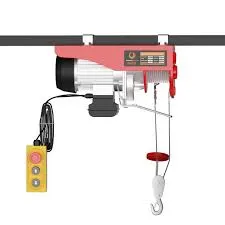


The Mini Electric Lift Revolutionizing Modern Mobility
In an era where technology is consistently reshaping our daily lives, the emergence of the mini electric lift stands out as a remarkable innovation. The mini electric lift is a compact, efficient solution designed to enhance mobility in various environments, catering to both residential and commercial needs. This article explores the myriad benefits and applications of mini electric lifts, highlighting their significance in fostering accessibility and convenience.
What is a Mini Electric Lift?
A mini electric lift is a smaller, more versatile version of traditional elevators or lifts. Typically designed for low-rise buildings or even homes, these electric lifts provide a means for individuals to move between floors without the strain of stairs. Featuring advanced technology, mini electric lifts operate quietly and require minimal space, making them an ideal solution for properties with limited room for a conventional elevator.
Key Features and Benefits
1. Space Efficiency One of the most significant advantages of mini electric lifts is their compact design. Unlike standard elevators, which often require a sizable shaft and additional structural support, mini electric lifts can be installed in tighter spaces. This makes them suitable for residential homes, small offices, and even outdoor areas.
2. Easy Installation Mini electric lifts can often be installed without extensive renovations. Many models are designed for a straightforward installation process, which significantly reduces downtime and costs. This feature is particularly appealing to homeowners and small businesses looking to improve accessibility without undergoing major construction.
3. Energy Efficiency As the name suggests, electric lifts are powered by electricity, making them more energy-efficient compared to hydraulic lifts. Many mini electric lifts are equipped with energy-saving technologies, which consume less power during operation. This not only lowers electricity bills but also contributes to environmental sustainability.
4. Safety Features Safety is paramount when it comes to lifts, and mini electric lifts are no exception. They often come equipped with multiple safety features, such as emergency stop buttons, automatic brakes, and sensors that detect obstructions. These mechanisms ensure a secure ride for users, providing peace of mind for both operators and passengers.

5. User-Friendly Interface Mini electric lifts are designed with the end-user in mind. Many models feature intuitive controls, making them accessible to people of all ages and abilities. For those with mobility challenges, the ease of operation is a vital benefit, enabling independent movement within a building.
Applications of Mini Electric Lifts
The versatility of mini electric lifts allows them to be used in a variety of settings.
- Residential Use In homes, mini electric lifts are perfect for multi-story living, allowing family members and guests to navigate without difficulty. They are especially beneficial for elderly residents or individuals with disabilities, providing a seamless way to access different levels of the home.
- Commercial Spaces Small businesses, such as retail shops, cafés, and offices, can greatly benefit from the installation of mini electric lifts. These lifts enhance customer experience by making the premises accessible to everyone, including those with mobility challenges.
- Public Buildings Hospitals, libraries, and community centers can utilize mini electric lifts to promote inclusivity. By improving access to various facilities, these locations become more welcoming to all patrons.
Conclusion
The mini electric lift is more than just a convenience; it represents a crucial step forward in making our built environment more accessible. As urban spaces become increasingly populated and the need for efficient mobility grows, the demand for innovative solutions like mini electric lifts will undoubtedly rise. Their combination of space efficiency, safety features, and user-friendly design makes them an indispensable component in the quest for greater accessibility in both residential and commercial applications. Embracing this technology is not only a practical choice but also a commitment to inclusivity, ensuring that everyone can move freely and comfortably within their surroundings.



